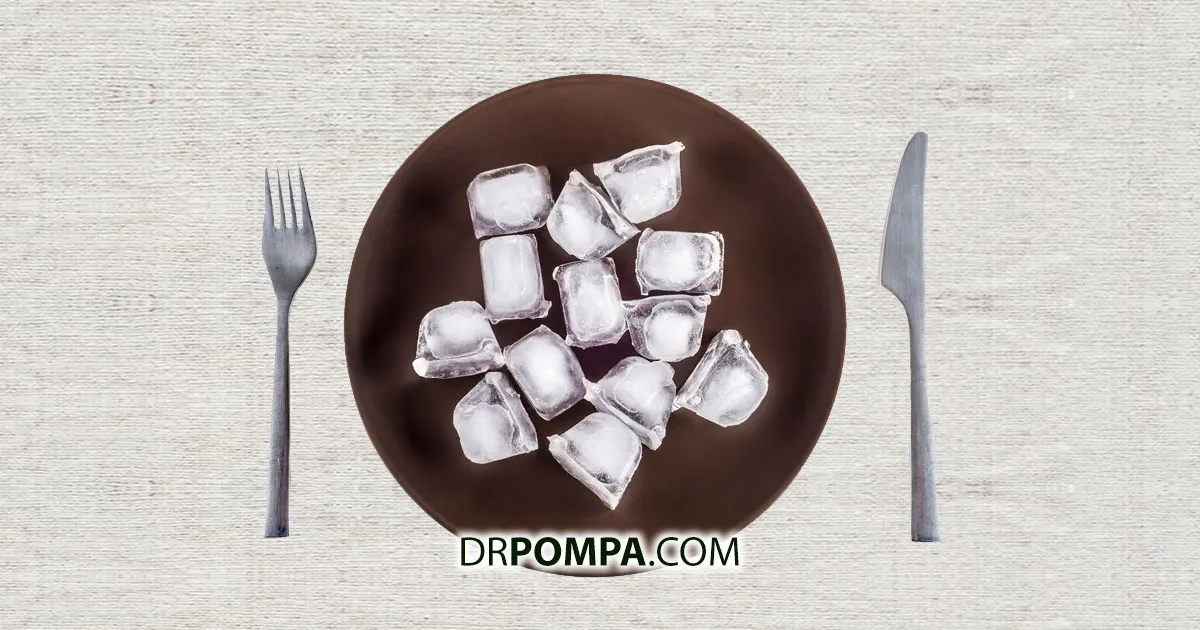Beyond Fasting: In my recently published book, Beyond Fasting, we explore the ways to safely and effectively prepare for and embark on a 5-day water fast. The book covers the ins and outs of therapeutic fasting, and how to properly prepare your cells for the healing experience that is water fasting. Today we will delve a little bit deeper, and answer some of the most frequently asked questions about the book.
To order your copy of Beyond Fasting, click here.
Question: What has been your background with fasting/ how did you start?
Answer:
I got into fasting in the 1990s, long before it was cool. I went to fasting seminars, and read the very early literature– which was mostly rooted in vegan literature. Although veganism was not my thing, I was drawn to this concept of the body’s innate intelligence. This concept is also what drew me to chiropractics: the body’s healing wisdom. I have so much respect for that philosophy, it’s how I got my life back, it’s how I raised my children.
Using fasting in my own life, both extended water fasts and intermittent fasting has enabled me to experience vibrant health. It’s by fasting for 11 days my wife reclaims her own health (dealing with cervical dysplasia) and hormonal imbalances. As a practitioner, I’ve incorporated fasting into protocols with clients and over the years developed a patient-tailored method that increases metabolic flexibility by harnessing the power of diet variation.
We are genetically programmed to fast, but unfortunately due to modern conveniences, it almost never happens. It’s a shame, we’re aging prematurely, we’re inviting in diseases and disorders. Although fasting has been embedded in every religion and various ancient healing modalities, modern science has finally caught up to the mechanisms that make this technique so valuable to our health. With these new scientific discoveries, fasting is making a comeback– and that’s great.
You can only go so far with knowledge in textbooks, seminars, and journals. At a certain point, you have to turn that knowledge into wisdom and you can only do that through experience. As a practitioner, I’ve established not only a personal relationship with fasting but have been lucky enough to develop an understanding of how its benefits apply to a wide range of people in my practice.
Question: Fasting can be summarized as ‘not eating’…so how is it that you filled over 300 pages of a book on the subject!?
Answer:
Fasting is like a marathon: you need to prepare for it. Unfortunately, so many of us have become very disconnected from natural cycles of feast and famine, and so our bodies are not prepared to simply start fasting. With a little preparation, we can begin to increase metabolic flexibility and prepare the body to get the most benefit out of the fasting experience.
In my book, we explore not only the reasons why fasting is beneficial and who fasting can help, but I also give you a step-by-step seven-week guide to prepare the body for a 5-day water fast. The book includes so many resources to improve your results, including complementary therapies, how to break a fast, and a great recipe guide for both higher carb and lower carb days.
This book is the same protocol I use on my patients, it’s the information I share with the practitioners that I teach therapeutic fasting to. By preparing properly for a fast and following the guidelines of this book, you enable adaptation that will set you up for the most benefit out of a water fast and quite simply make the fast easier to achieve.
Question: What does this seven-week protocol work towards?
Answer:
In wanting to maximize the results of the fast and make it as easy as possible, the book is broken down into a seven-week guide leading up to a five-day water fast. The process eases you into fat-adaptation, whereby your body can quickly transition into burning glycogen (sugars) to burning ketones (fat) for fuel. Some of the key progressions include getting fat adapted. The book will delve into this quite specifically, but essentially this starts by lowering carbohydrate intake to the point where the body has to tap into fat as a source for fuel. This may take two or three weeks, which is why the book is full of tips on how to make this happen.
A huge part of fat adaptation is rooted in the concept of: don’t eat less, eat less often. When calories are restricted chronically, your metabolism will flow down. This is not ideal, it does the opposite of turning you into a fat-burning machine. A huge part of metabolic flexibility is achieved by narrowing the eating window and getting your body used to periods with food, and periods without food. By eating less often we start to flex the fasting muscle, without actually triggering any metabolic damage or slow-down. This is called intermittent fasting, and it works what I call metabolic mitochondrial fitness. This is where the ‘marathon training’ for your fast begins.
Question: Can perimenopause, menopausal, or women dealing with hormonal imbalances fast?
Answer:
They absolutely can, in fact, this book is tailored to deal with all sorts of hormonal imbalances and illnesses from gut disorders, to thyroid dysregulation, to weight loss resistance. This is the very reason for the seven-week progression into the fast, it’s to prepare the body metabolically.
If you’re already super healthy, odds are you can dive into water fasting pretty easily. My patients are facing a health challenge, and this is why we’ve devised a protocol to help people reach a place where they can indeed fast without causing more harm than good.
The book is also for healthy people, though, because truthfully the more you prepare for a fast the deeper your body will go into autophagy, the more benefits you will get from your fast.
In short: yes, fasting is for everyone. The key is just understanding metabolic flexibility, and taking as long as you need to achieve this before doing an extended five day fast. Although the book is broken down into seven weeks, you may decide to stay on a certain week for two or even three weeks– until you feel confident in progressing to the next step. This book is about changing lifestyles, it’s about integrating new patterns, and promoting health in the long term.
For someone dealing with more serious hormonal imbalances: take your time. As you read the book, take advantage of the tailored information for those who are sick or have weaker hormones. This may look like adding in a few more high carb days as your body becomes fat adapted. In time, though, you will be able to widen the fasting window like everyone else. Take your time.
Question: Are there any other options for those who just don’t feel ready to fast?
Answer:
Actually yes, the preparatory month can take you into week 5 with a partial fast. A partial fast mimics the benefits of a water fast, by drastically lowering your caloric intake for five consecutive days. By this point, you should absolutely feel prepared to experience at least a partial fast, due to the metabolic flexibility you have developed to this point. Whether you opt for a partial or full water fast, you will reap long term benefits that come from controlled caloric restriction.
Question: I’m at the end of day five of my fast and I’m feeling great, should I continue?
Answer:
Although I am a big fan of listening to your body, when it comes to fasting I ascribe to the belief that you’re better off doing 5-day water fasts more regularly, as opposed to trying to go for as long as you can.
There are signs you can look for when it comes to extended fasting, we get into it in the book, things like changes in tongue color, sensations of hunger, and a weight loss plateau. Although you can go longer, again, I suggest doing a 5-day fast more regularly than pushing your limits each time. There is too much of a good thing, so 5-day per season (once every three months) does wonders, and it’s the safest option.
Question: How often can I do a 5-day water fast?
Answer:
This really depends on the individual. Fasting more regularly is particularly beneficial for people with a lot of excess body fat. For some of my patients with a lot of weight to lose, we can incorporate a 5-day fast once a month. For others, a seasonal (once a quarter) or even just one five-day fast per year can be great maintenance fast to promote health and longevity.
Question: How do I break the fast?
Answer:
This is week seven of the book! There is an entire chapter dedicated to the in’s and out’s of breaking your fast properly. This chapter may very well be the most important chapter in the whole book because the way you break your fast plays a huge role in creating stem cells and setting your body up for all the long term benefits of the fast.
After clearing out old and damaged cells through autophagy, your body is now in a renewal phase. An abundance of stem cells becomes available and the worst thing you can do is stress it. Assaulting your body with too much or the wrong kind of foods can actually shut down that stem cell formation, which is not what we want!
Your microbiome has changed during this fasting period, which is a great thing, but it also means you need to be mindful of what you consume to build back up that flora. Your HCL (digestive acid) is low post-fast, which means you won’t be able to properly digest things like meat straight away. You also have to be mindful of the amount of food you’re consuming, not to shock the body.
We explore the best way to re-integrate foods in-depth, allowing you to reap the most out of your fast and set yourself up for the benefits long after the fast ends.
Question: Can I continue to drink my coffee or take supplements during a fast?
Answer:
During a fast, the answer is basically a resounding: no. While water fasting, you want to let the body do its thing and trust its innate wisdom. Teas, coffee, and other supplements will interfere with the deep process of autophagy.
The exception to this would be if someone is highly toxic, they might want to take a supplement like Gut CLR and Cell CLR, and perhaps some electrolytes to help eliminate toxins and reduce the herxheimer reaction. Ideally, though, you want to take nothing but small amounts of sea salt if necessary, to help replenish electrolytes. I explain in more detail how to use salt in the book.
If you are doing a modified fast, you can continue to take your supplements but I suggest avoiding any caffeine because it will encourage pushing beyond what your body needs to benefit from the fast. A lot is going on inside of you during this time, and this requires adequate rest. By avoiding caffeine you can measure your body’s true energy levels and live accordingly.
Remember that these fasts are about trusting the body, relying only on its innate intelligence. Stay away from lemon, herbal teas, apple cider vinegar. Any and all flavorings or supplements trigger enzymes in the mouth, they stimulate digestion– this interferes with your fasting experience. Stick to water and mineral-rich sea salt, that’s it.
Question: Who shouldn’t fast?
Answer:
The list here is pretty small. Basically pregnant women and breastfeeding women should not fast, for a few reasons including the fact you don’t want to be dumping any unnecessary toxins into your system during this time. A lot of energy goes into building and nourishing a baby so focusing on nourishing yourself during this time is key.
I would also warn against fasting for anyone who is anorexic, bulimic or has patterns of disordered eating. Because of the restrictive nature of fasting, and the role that it can have on someone who has a psychologically disrupted relationship with food, it could do more harm than good.
Diabetics can fast, but they will require much less insulin, so best do it in conjuncture with doctor’s guidance. In fact, anyone who is unsure, on medication, or is dealing with a complicated health issue should seek out guidance when it comes to fasting. I train practitioners all around the country in this very method.
I don’t suggest children embark on a 5-day fast, but intermittent fasting (a daily fasting window of say, 12-14 hours) is completely safe and even natural, and beneficial to hormonal health and development.
To order your copy of Beyond Fasting, click here. You can also join Fasting For A Purpose for education, community and receive updates about my next 5-day group fast.
My Favorite Fasting Aid
Your body is under constant attack from oxidative stress. The good news is, a little oxidative stress is natural. But too much free radical damage can cause irreparable damage to your cells, proteins, and even your DNA. And that means you’re at a higher risk for disease and accelerated aging. Even fasting can stress your cells enough to cause some oxidative stress. But that doesn’t mean fasting is bad for you. Instead, this stress makes your cells more resilient and contributes to anti-aging benefits over time.
However, it is a good idea to get some fasting support to keep free radicals in check. Fastonic (TCF) is a leading-edge fasting support that balances free-radical damage and supports several different systems in the body.
Fastonic (TCF) can help:
- Decrease appetite
- Stabilize fat metabolism
- Support cognitive function
- Reduces fatigue
- Improved skin health
- And MUCH more
Use Fastonic (TCF) to support all forms of fasting protocols and symptoms. No more painful hunger pangs. No more brain fog or fatigue. Try Fastonic (TCF) today.












